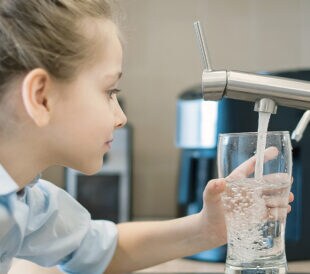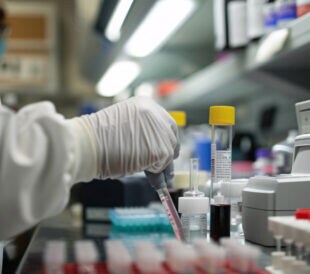In a world faced with never-ending environmental challenges, standards for quality drinking water and compliance with those regulations has never been more important. Yet many labs struggle to keep pace with their analytical demands—especially since traditional analytical methods are manual, time-consuming and prone to errors.

Fortunately, there’s hope in sight. If your lab is seeking a smarter way to detect chloride in drinking water, you’ll love hearing about a novel discrete analyzer-based automated method that can save time and reduce errors. Here’s the information you need:
What are the current standards for water quality in the US?
In the US, the quality of drinking water is regulated and supervised by the US Environmental Protection Agency (US EPA) Safe Drinking Water Act (SDWA). The US EPA sets the Secondary Maximum Contaminant Level (SMCL) for chloride at 250 mg/L.
Why is chloride in drinking water a problem?
Measuring chloride levels in drinking water is important, even though chloride itself is not a health concern. But, it adds a salty taste that some consumers don’t prefer. In addition to taste qualities, excessive concentrations of chloride can contribute to drinking-water distribution-network corrosion and, in the worst cases, can result in copper and lead release into drinking water.
What are the challenges with traditional methods of analyzing water quality?
Traditional methods based on titrimetry are well-known and accurate in the analyses of drinking water. However, these methods are time-consuming and contain manual steps that are potential sources of measurement inaccuracies. These challenges have triggered the need to develop a different method for analyzing consumer water.
How does automated, discrete analysis improve chloride detection?
The Thermo Scientific Drinking Water Method uses the Gallery or Gallery Aqua Master discrete analyzer in combination with ready-to-use reagents and test procedures to monitor chloride levels following the SDWA regulations while accessing the benefits of discrete analyzer technology. This method is easily automated and allows simultaneous analysis of multiple parameters from the same sample aliquot, automatic spiking procedures, flexible test and quality control parameter configuration, and flexible result reporting with versatile features for configuring report templates.
As an integrated and automated platform, the Gallery Aqua Master discrete analyzer eliminates the need to handle hazardous reagents and increases laboratory productivity by freeing staff to work on other tasks.
To learn more about automated detection of chloride in drinking water and the Thermo Scientific Drinking Water Method, check out this the application note: Automated method to detect chloride in drinking water using the Thermo Scientific Gallery Aqua Master discrete analyzer.



